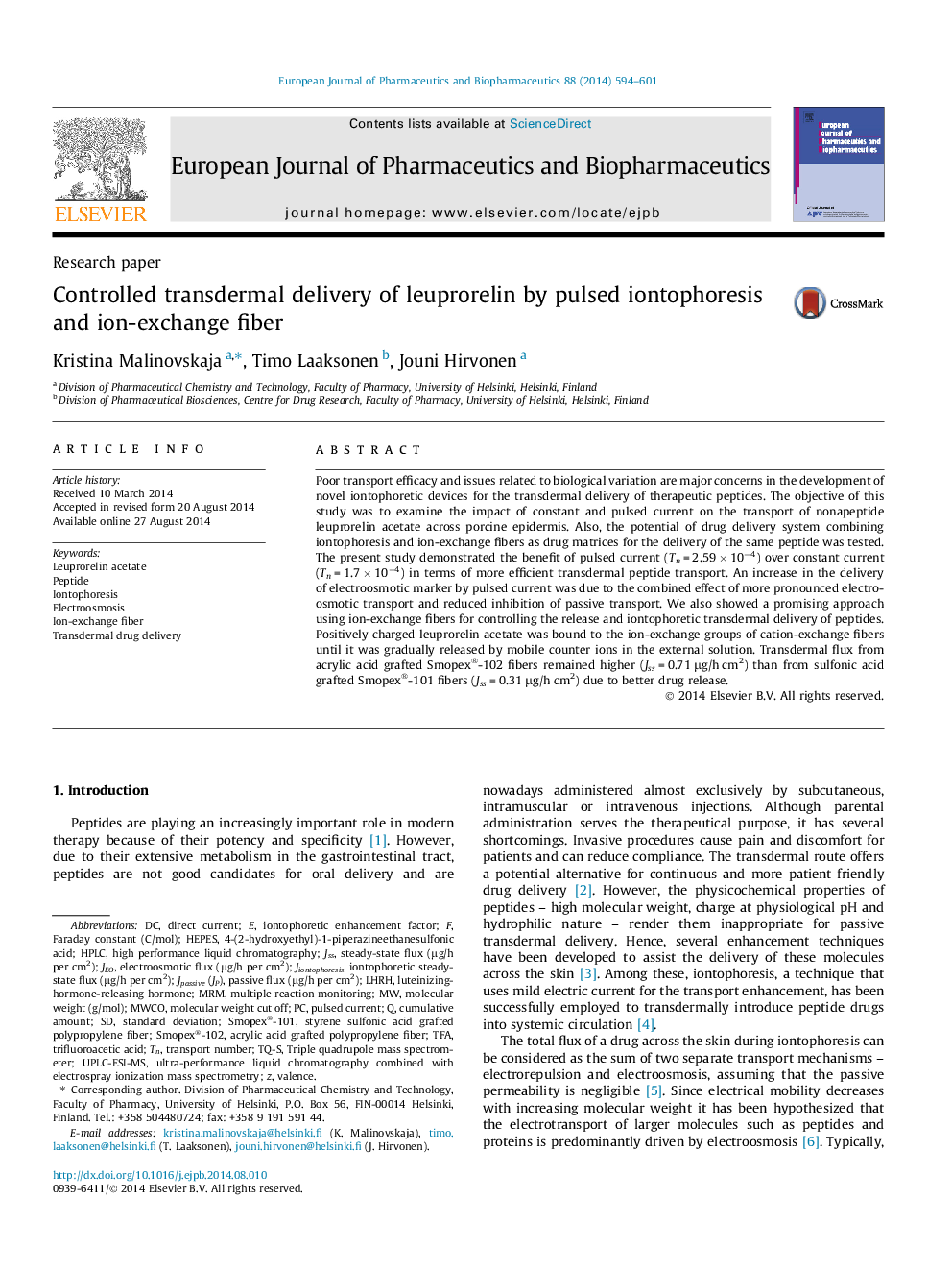| Article ID | Journal | Published Year | Pages | File Type |
|---|---|---|---|---|
| 2083496 | European Journal of Pharmaceutics and Biopharmaceutics | 2014 | 8 Pages |
Poor transport efficacy and issues related to biological variation are major concerns in the development of novel iontophoretic devices for the transdermal delivery of therapeutic peptides. The objective of this study was to examine the impact of constant and pulsed current on the transport of nonapeptide leuprorelin acetate across porcine epidermis. Also, the potential of drug delivery system combining iontophoresis and ion-exchange fibers as drug matrices for the delivery of the same peptide was tested. The present study demonstrated the benefit of pulsed current (Tn = 2.59 × 10−4) over constant current (Tn = 1.7 × 10−4) in terms of more efficient transdermal peptide transport. An increase in the delivery of electroosmotic marker by pulsed current was due to the combined effect of more pronounced electroosmotic transport and reduced inhibition of passive transport. We also showed a promising approach using ion-exchange fibers for controlling the release and iontophoretic transdermal delivery of peptides. Positively charged leuprorelin acetate was bound to the ion-exchange groups of cation-exchange fibers until it was gradually released by mobile counter ions in the external solution. Transdermal flux from acrylic acid grafted Smopex®-102 fibers remained higher (Jss = 0.71 μg/h cm2) than from sulfonic acid grafted Smopex®-101 fibers (Jss = 0.31 μg/h cm2) due to better drug release.
Graphical abstractFigure optionsDownload full-size imageDownload high-quality image (82 K)Download as PowerPoint slide
